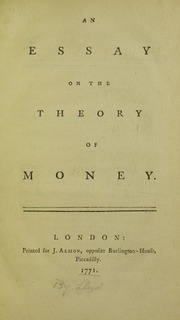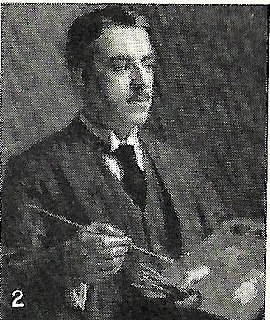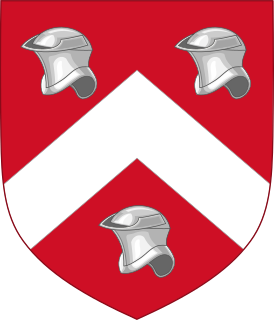 W
WSir Edward Broughton (d.1665) was a Welsh landowner and soldier with a long service in Royalist armies during the Wars of the Three Kingdoms. Imprisoned in the Gatehouse Prison in Westminster in 1659 following a Royalist rebellion, he later married the prison-keeper's widow and took on the lease of the prison himself.
 W
WPrivate Thomas Collins of Pelcomb, Camrose in the county of Pembrokeshire, Wales was a participant in the battle of Rorke's Drift which took place 22-23 January 1879. During this battle, the 24th regiment of foot fought and resisted a force of at least 4,500 Zulu warriors leaving 17 British dead and 10 wounded, along with 450 dead Zulu warriors.
 W
WDafydd ap Llewelyn ap Hywel, better known as Dafydd Gam, anglicized to David or Davy Gam, was a Welsh warrior, a prominent opponent of Owain Glyndŵr. He died at the Battle of Agincourt fighting for King Henry V, King of England in that victory against the French.
 W
WSir John Donne was a Welsh courtier, diplomat and soldier, a notable figure of the Yorkist party. In the 1470s he commissioned the Donne Triptych, a triptych altarpiece by Hans Memling now in the National Gallery, London. It contains portraits of him, his wife Elizabeth and a daughter. He may well have been related to the Jacobean poet John Donne, although not as a direct ancestor, as he had no Donne grandchildren.
 W
WColonel Robert Ellice of Gwasnewydd was a Welsh professional soldier who served in the Royalist army in the English Civil War.
 W
WHedd Wyn was a Welsh-language poet who was killed on the second day of the Battle of Passchendaele during World War I. He was posthumously awarded the bard's chair at the 1917 National Eisteddfod. Evans, who had been awarded several chairs for his poetry, was inspired to take the bardic name Hedd Wyn from the way sunlight penetrated the mist in the Meirionnydd valleys.
 W
WHenry Humphrey Evans Lloyd was a Welsh army officer and military writer. He fought for the French against the Austrians, the Jacobite forces of Charles Stuart against the British, the Austrians against the Prussians and the Prussians against the Austrians, and the Russians against the Turks. He also undertook various diplomatic missions for Britain. His writings on military theory were studied by George Washington and George S. Patton, and were used by J. F. C. Fuller to espouse a science of war.
 W
WThomas Monaghan VC was a British recipient of the Victoria Cross, the highest and most prestigious award for gallantry in the face of the enemy that can be awarded to British and Commonwealth forces, during the Indian Mutiny
 W
WMajor-General Sir Thomas Morgan, 1st Baronet was a Welsh soldier during the English Civil War, and Commander-in-Chief in Scotland during the Restoration.
 W
WCarey Morris was a Welsh painter, illustrator, author and businessman born in Llandeilo, Carmarthenshire.
 W
WSir John Owen of Clenennau (1600–1666) was a Welsh landowner best known for his service as a Royalist officer during the English Civil War, during which he held a variety of commands in North Wales.
 W
WTomos Prys (c.1564–1634) was a Welsh soldier, sailor and poet. He was the eldest son of Ellis Price MP, of Plas Iolyn, Pentrefoelas, Denbighshire.
 W
WSir Rhys ap Thomas (1449–1525) was a Welsh soldier and landholder who rose to prominence during the Wars of the Roses, and was instrumental in the victory of Henry Tudor at the Battle of Bosworth. He remained a faithful supporter of Henry and was rewarded with lands and offices in South Wales. Some sources claim that he personally delivered the death blow to King Richard III at Bosworth with his poleaxe.
 W
WSir Owen Tudor was a Welsh courtier and the second husband of Catherine of Valois (1401–1437), widow of King Henry V of England. He was the grandfather of Henry VII, founder of the Tudor dynasty. Owen was a descendant of a prominent family from Penmynydd on the Isle of Anglesey, which traces its lineage back to Ednyfed Fychan, a Welsh official and seneschal to the Kingdom of Gwynedd. Tudor's grandfather, Tudur ap Goronwy, married Margaret, daughter of Thomas ap Llywelyn ab Owain of Cardiganshire, the last male of the princely house of Deheubarth. Margaret's elder sister married Gruffudd Fychan of Glyndyfrdwy, whose son was Owain Glyndŵr. Owen's father, Maredudd ap Tudur, and his uncles were prominent in Owain Glyndŵr's revolt against English rule, the Glyndŵr Rising.
 W
WSir William ap Thomas Kt was a Welsh nobleman, politician, knight, and courtier. He was a member of the Welsh gentry family that came to be known as the Herbert family through his son William Herbert, 1st Earl of Pembroke and is the agnatic ancestor, via an illegitimate descendant of the 1st Earl of the 8th creation, of the current Herbert family of the Earl of Pembroke and Montgomery, and also of the Herbert Earl of Carnarvon.
 W
WSir Roger Williams was a Welsh soldier of fortune and military theorist, who served the Protestant cause, fighting against the Spanish in several theatres of war. Robert Dudley, 1st Earl of Leicester said that as a soldier he was "worth his weight in gold". He was later a close associate of Robert Devereux, 2nd Earl of Essex, and became a national hero because of his exploits fighting the Catholic League. He has been described as "an obstreperous, opinionated Welsh soldier" who was "Essex's devoted confederate and agent".
 W
WSimon Yorke was a Welsh landowner and soldier. He inherited the Erddig estate in 1922. He was High Sheriff for Denbighshire in 1937. He was a lieutenant in the Denbighshire Yeomanry and enlisted as a private in the North Staffordshire Regiment during World War II.